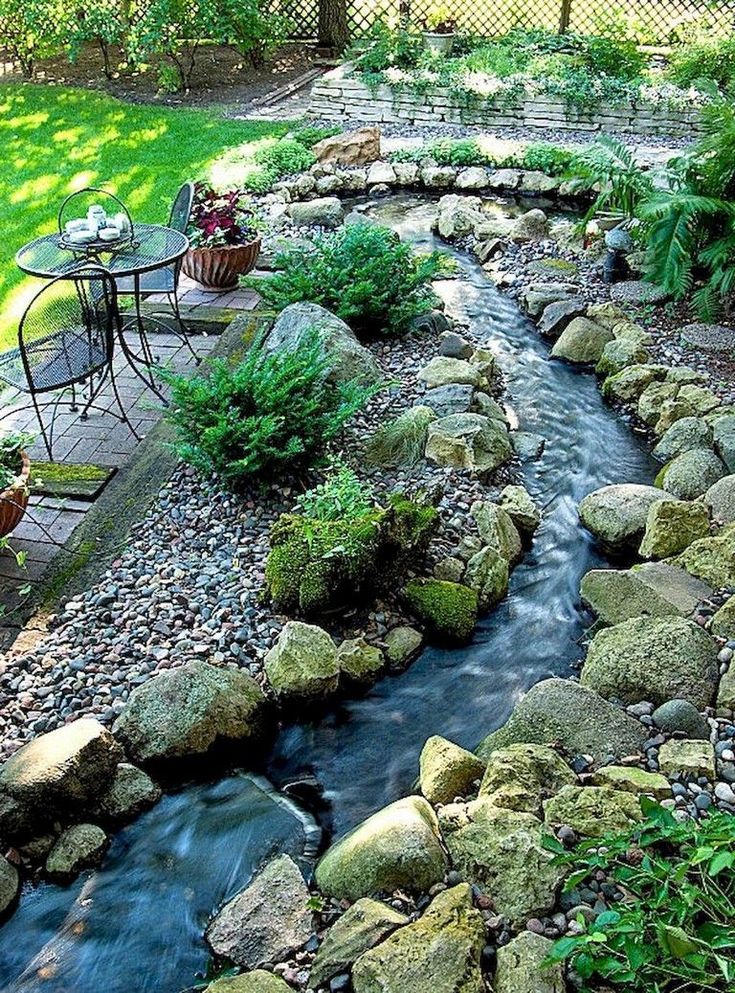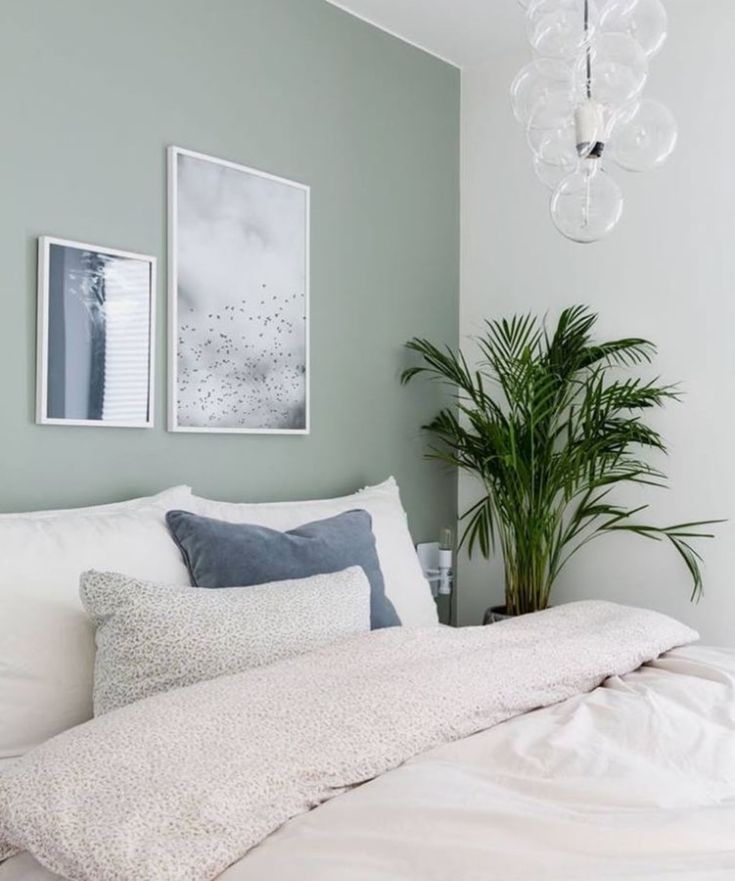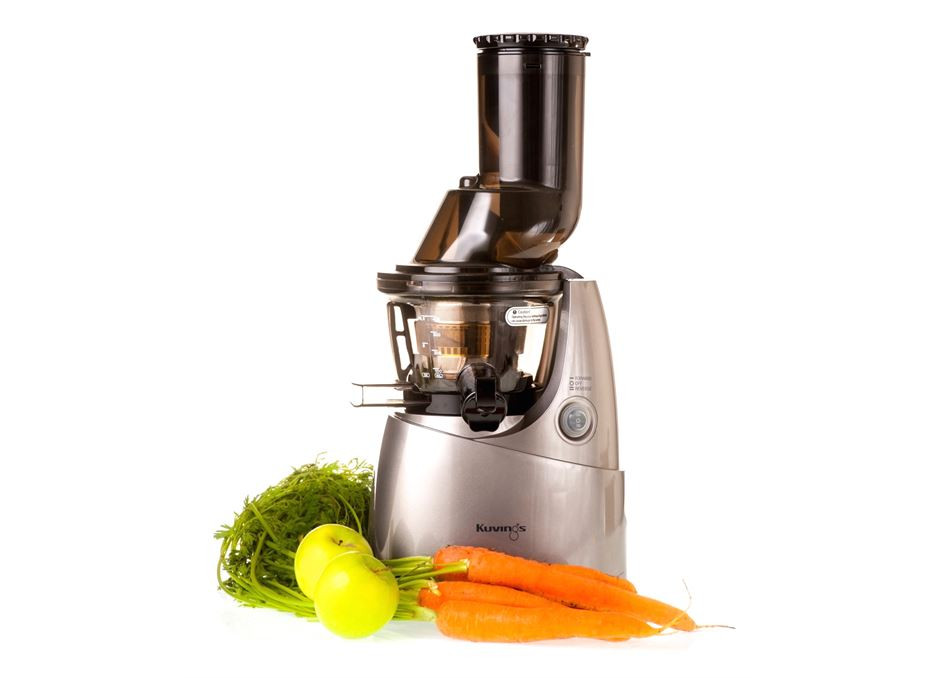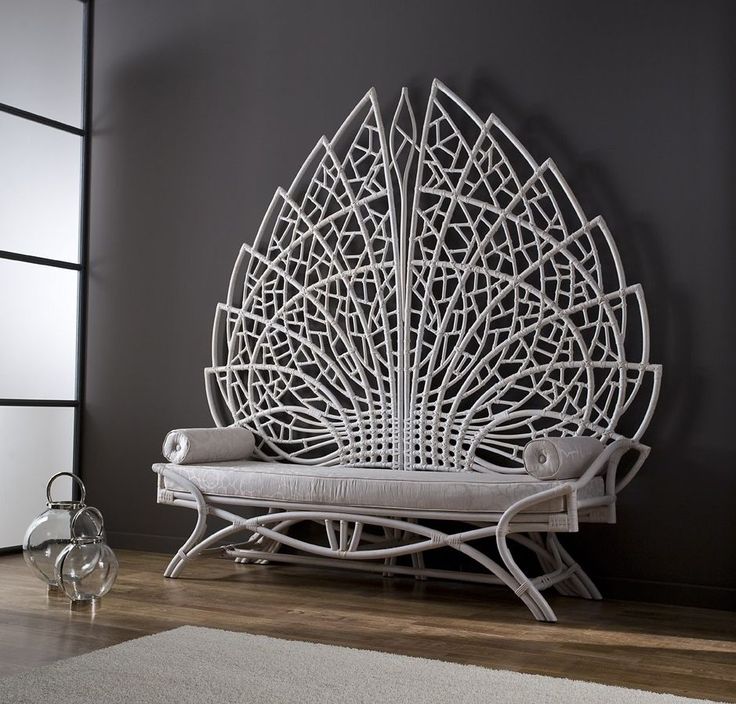Staging tips for selling home
How to Stage Your Home for a Quick Sale
When real estate agents talk about staging your home, they're referring to a method of preparing a property for sale on the real estate marketplace. Staging is designed to showcase a home's best assets, impress buyers, and sell it quickly for the highest possible price.
Because not all sellers stage their homes–especially homes in lower price ranges–you'll be at an advantage if you elect to take the extra step of staging your property. Here's how.
Key Takeaways
- Home staging refers to preparing your home to sell so it appeals to the most potential buyers who will pay the highest possible price.
- Relative to the amount of time and money involved, staging may be one of the most lucrative projects you'll ever undertake.
- The living room, kitchen, bathrooms, bedrooms, and outdoor living spaces are all important areas to focus on when staging your home.
- A few recommended home staging tips are to declutter, clean or replace your appliances so they look new, remove any personal items such as photos and monogrammed towels, and get rid of odors.
What Is Home Staging?
Good staging is “a form of visual merchandising that draws on some of the fundamentals of interior design,” says Gordon Roberts, a broker with Sotheby’s International Realty. “The object of staging is to flatter the property but not be too obvious about it, like being dressed without drawing particular attention to what you’re wearing.”
Melinda Massie, who owns a Fort Worth home organizing firm, says that good staging lets the buyers imagine themselves in the home, shows off its good features and hides its flaws, turns weird spaces into usable spaces, creates a mood (stagers call it “emotional” staging), and makes the home look significantly better in photos.
Home staging is not the same as decorating. Decorating is about personal style, while staging makes your home appealing to the largest pool of buyers.
Why Home Staging Is Important
When dealing with such a significant financial transaction as selling a home, you don't want to settle for a lower selling price or a longer marketing period than you have to.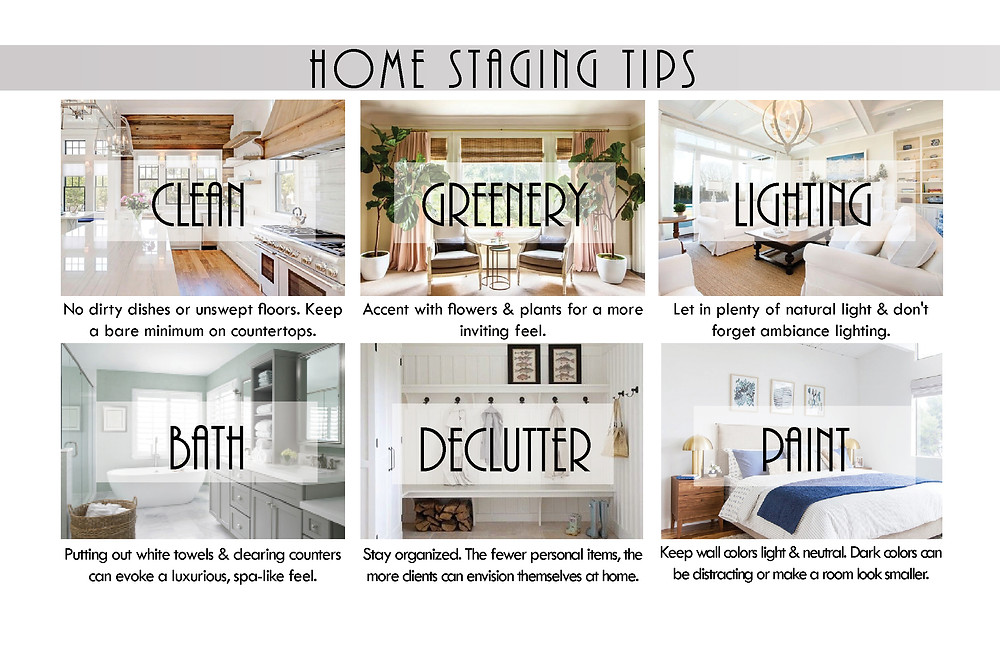
Relative to the amount of time and money involved, staging may be one of the most lucrative projects you ever undertake. Potential buyers aren't just looking for a structure to inhabit—they're also looking for a way to fulfill their dreams and improve their lifestyles. Staging can create a more emotional purchase for the buyer, which ultimately can generate more money for the seller.
Home staging is also beneficial because potential buyers don't want to see work that needs to be done upon moving into the home. For every problem they see, they'll deduct its cost from their offering price. If they see too many problems, they may pass completely on buying the home.
Benefits of Home Staging
Staging a home makes it visually more appealing and allows potential homebuyers to envision how the home might look once they move in to it, making it look more move-in ready. Having furnishings and wall hangings in place is often more inviting than empty rooms and blank walls.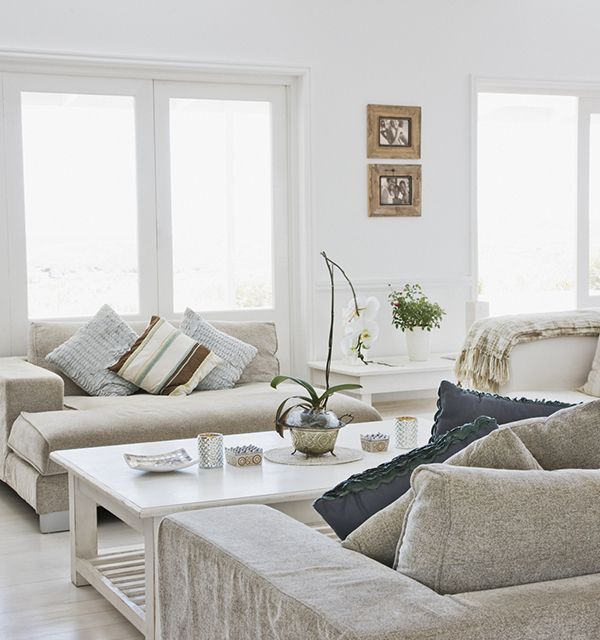
According to the 2021 Profile of Home Staging, a report from the National Association of Realtors (NAR), 47% of buyers' agents said that staging positively affected most buyers' opinions of a home.
The report also found that 82% of buyers' agents say staging makes it easier for buyers to visualize a property as their future home, which can help the home sell faster. According to the report, staging the living room was found to be very important to 46% of buyers, followed by the master bedroom, at 43% and the kitchen at 35%.
Options on How to Stage a Home
Many full-service realtors today will take care of staging your home, many of whom may hire a professional stager to assist in the process. They will find and procure the appropriate furnishings and accessories to keep the home looking good while you're moved out and showing the property. The cost to stage may be split between the homeowner and the realtor's expected commission, but expect to pay between 1% and 3% of the home's selling price on staging.
New trends have homeowners opting for DIY home staging (as opposed to hiring a professional stager) and limiting the number of buyers who come into the home for in-person showings. Yet staging remains an important tool because a well-staged home looks better in photographs—and most buyers are looking for homes online. Be prepared to pay for things like painting, storage organizers, furniture and furnishings rentals, floral arrangements, and cleaning supplies.
Below, we list a dozen tips for how to go about staging your home.
12 Home Staging Tips
According to the NAR report, the most common rooms that are staged are the living room (93%), kitchen (84%), owner's bedroom (78%), and the dining room (72%).
Of course, time and money determine the level of staging that is practical for your home. Try to employ the following techniques in as many rooms of the house as you can afford and have time for.
1. Clean
A clean home shows potential buyers that you've taken good care of the property. Ideally, you should clean every part of the house, from the floors to the ceilings—and everything in between.
Ideally, you should clean every part of the house, from the floors to the ceilings—and everything in between.
If you don't have new appliances in the kitchen, make sure the existing ones are spotless. Likewise, make sure your bathrooms sparkle, from the corners of the tub, to the sink drain, to that spot behind the toilet you don't think anyone can see. Your goal should be to make everything look new.
$1,500
The median amount spent on home staging, when using a specialized staging service was $1,500, according to NAR's 2021 Profile of Home Staging Report.
2. Declutter
There are two major problems with clutter. One is that it distracts buyers from your home's features. The other is that it makes it seem like the home has less space.
Now is the time to box up and put into storage the things you don't need on a day-to-day basis (think: knickknacks, games, papers, seasonal clothes, and messy hobbies). It's also time to get rid of things you no longer need—like the expired food in the back of the cabinets, and the clothes and toys the kids have long since outgrown.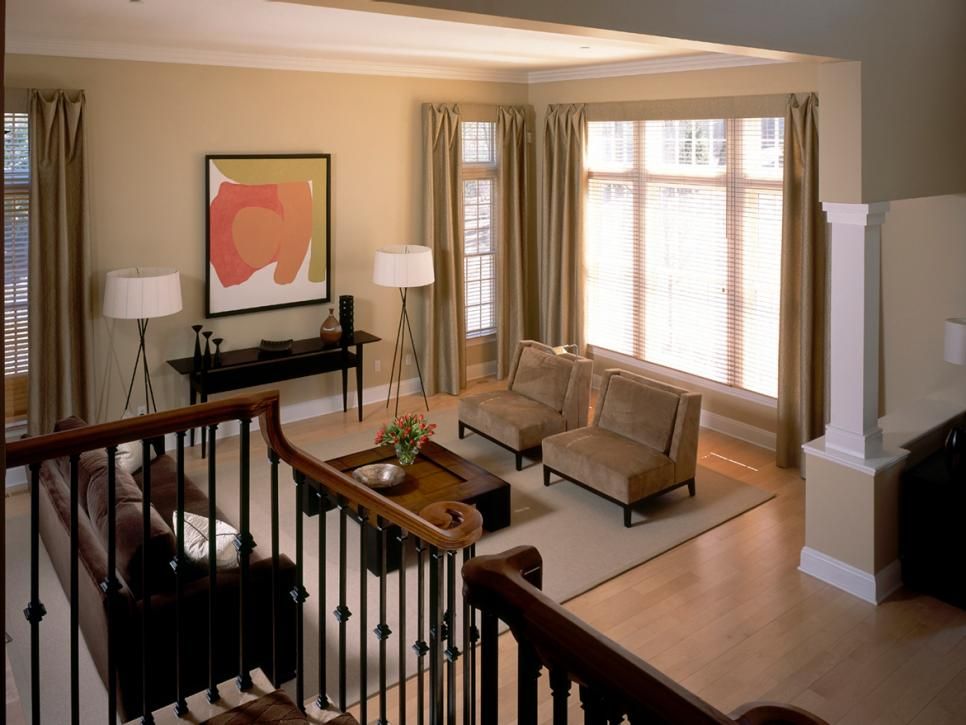 The more empty storage space you have, the better.
The more empty storage space you have, the better.
3. Depersonalize
Buyers need to be able to envision themselves in your home, so remove all the family photos, keepsakes, and refrigerator art. Keep clothes hidden away as much as possible, and make sure the bathroom counters are empty (except for hand soap, of course). Likewise, put away all the toys and anything else that is highly personal or evocative of the home's current inhabitants.
4. Focus on Fresh
A few potted plants can do wonders to make your home feel fresh and inviting. If you have a lot of plants, space them out strategically so they don't overwhelm any one area (unless you have a greenhouse). Of course, dead and dying plants don't do much to make your home look well tended.
Another way to make your home seem fresh is to get rid of odors. Pets, kids, last night's dinner, a damp bathroom, and many other conditions can make your home smell. Inexpensive tricks for ridding a home of odors and giving it an inviting aroma include baking cinnamon-coated apples or cookies in the oven (be careful not to burn them), or burning vanilla-scented candles.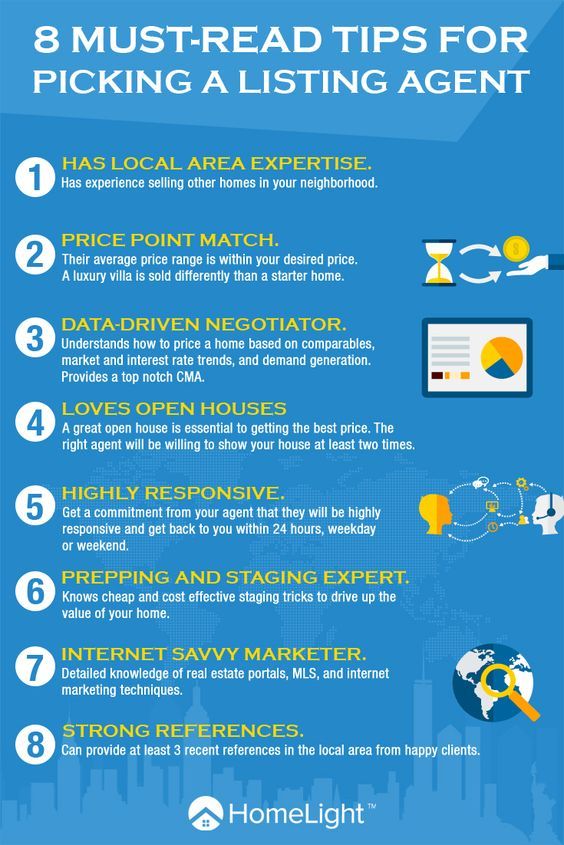
It's also a good idea to wipe down the kitchen sink with half a lemon, then grind it in the garbage disposal to remove sink odors. While you could use an air freshener to deodorize your home, it's best to avoid these since they can trigger allergic reactions and asthma in sensitive people. If you're a smoker and you normally smoke indoors, start limiting your smoking to outside the home and take extra steps to deodorize indoors. Finally, don't forget to take out the trash.
Essential oils (mix one cup of water with eight to 10 drops of oil in a spray bottle, and spray toward the center of each room), herbs and flowers, beeswax candles, and air purifiers are chemical-free ways to freshen the air in your home.
5. Define Rooms
Make sure that each room has a single, defined purpose. And make sure that every space within each room has a purpose. This will help buyers see how to maximize the home's square footage. If you have a finished attic, make it into an office. A finished basement can become an entertainment room, and a junk room can be transformed into a guest bedroom.
A finished basement can become an entertainment room, and a junk room can be transformed into a guest bedroom.
Even if the buyer doesn't want to use the room for the same purpose, the important thing is for them to see that every inch of the home is usable space. This includes alcoves, window seats, corners, breakfast nooks, and other areas.
6. Wallpaper and Paint
It is unlikely that a potential buyer will like your wallpaper. Your best bet is to tear it down and paint the walls with a neutral color instead. It's best not to paint over the wallpaper because it may look shabby and send a signal to the buyer about work they may have to do later.
Potential buyers will likely feel the same way about custom paint colors. You may love your orange bathroom, but people's tastes in colors are very specific and highly personal. You might think white walls are ideal because they create a blank slate that allows buyers to envision their own décor and gives them an easy starting point.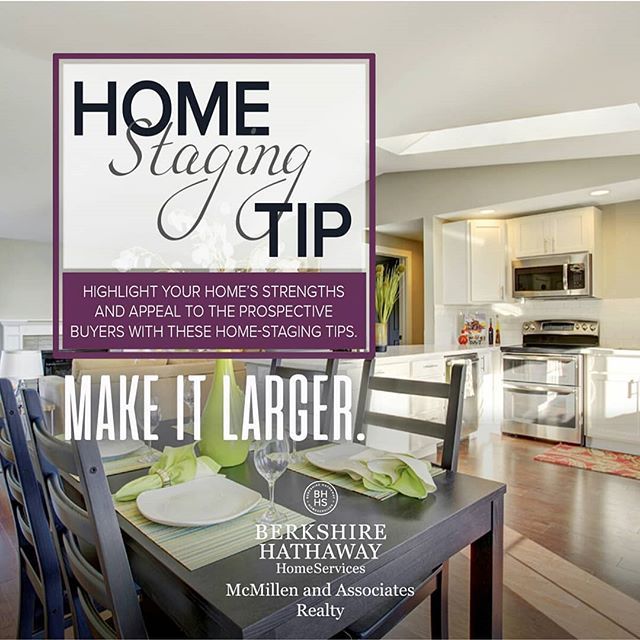 However, it's actually better to paint your home with warm, neutral colors.
However, it's actually better to paint your home with warm, neutral colors.
7. Flooring
No one wants to live in a home with dirty, stained carpet, especially when someone else was the one who dirtied it. And linoleum is outdated and looks cheap. Although pricey, hardwood floors add value and elegance to a home. They are also low maintenance, provide great long-term value, and are perfect for buyers with allergies. In other words, they appeal to almost everyone, and if not, they're easily carpeted over by the buyer and preserved for the next owner.
Common areas like the living room, dining room, and kitchen should be your main focus if you are going to add hardwood floors. Ideally, you should upgrade the bathrooms, too. They have relatively little floor area and therefore won't be too expensive. In kitchens and bathrooms, go with ceramic tile or stone if you can afford it. If not, use high-quality vinyl tiles that mimic these more expensive materials.
8.
 Lighting
Lighting Take advantage of your home's natural light. Open all curtains and blinds when showing your home. Add fixtures where necessary, and turn on all the lights for showings (including those in the closets). This makes your home appear brighter and more inviting, and it saves buyers from having to hunt for light switches. If you think your existing fixtures are fine, be sure to dust them and clean off any grime. Otherwise, outdated and broken light fixtures are easy and cheap to replace.
9. Furniture
Make sure furniture is the right size for the room, and don't clutter a room with too much of it. Furniture that's too big will make a room look small, while too little or too small furniture can make a space feel cold.
Don't use cheap furniture, either. You don't have to pay a lot of money to switch out your existing furniture—and you may even be able to rent furniture to stage your home. Either way, make sure the furniture looks nice, tidy, and inviting. You can use throw pillows to add contrast and a pop of color.
You can use throw pillows to add contrast and a pop of color.
You'll also want to arrange the furniture in a way that makes each room feel spacious, homey, and easy to navigate. In the living room, for example, seating should be set up in a way that creates a comfortable conversation area.
10. Walls and Ceilings
Cracks in the walls or ceiling are red flags to buyers because they may indicate foundation problems. If your home does have foundation problems, you will need to either fix them or alert potential buyers to them; fixing any foundation problems would be better in terms of getting the home sold. If the foundation only looks bad but has been deemed sound by an inspector, repair the cracks so you don't scare off buyers for no good reason.
11. Exterior
The exterior and the entryway—which factor into the home's "curb appeal"—are important points of focus because they can heavily impact a buyer's first impression. They may even determine someone's interest in viewing the inside of the house.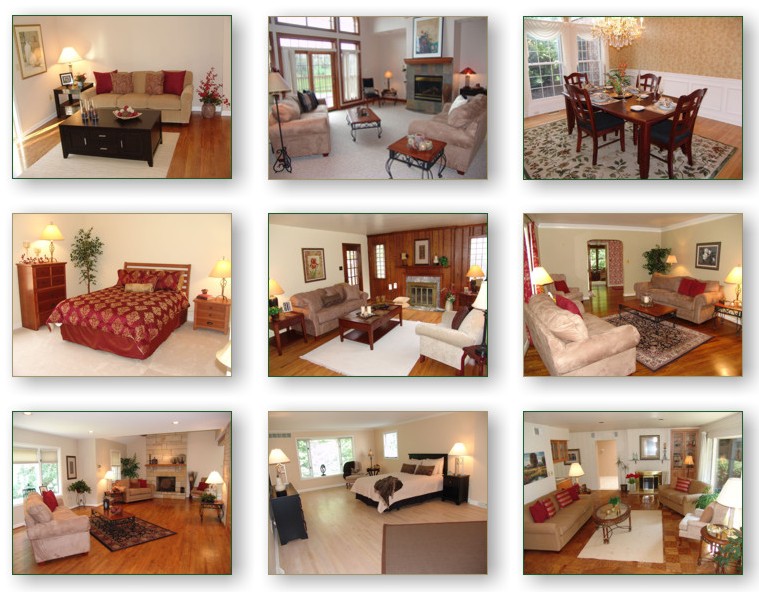
Make sure your lawn, hedges, trees, and other plants are neatly pruned, and be sure to get rid of any weeds. Wash windows well, and consider adding flower boxes to brighten them up even more. If you can, power wash your home's exterior—this can make it look almost freshly painted but with less effort and expense.
Make sure the sidewalk leading up to the house is clear and clean, and buy new doormats for the front and back doors. If you have a pool, showcase it by making sure it's crystal clear. Creating some sort of outdoor living space in the backyard, such as a deck or patio with outdoor furniture, is another way to use the exterior of your home to its greatest advantage.
12. Final Touches
Just before any open house or showing, make sure that your staging efforts have the maximum impact with a few last-minute touches that will make the home seem warm and inviting. Put fresh flowers in vases, let fresh air into the house for at least ten minutes beforehand so it isn't stuffy, light a few candles (soft and subtle fragrances only), and put new, plush towels in the bathrooms.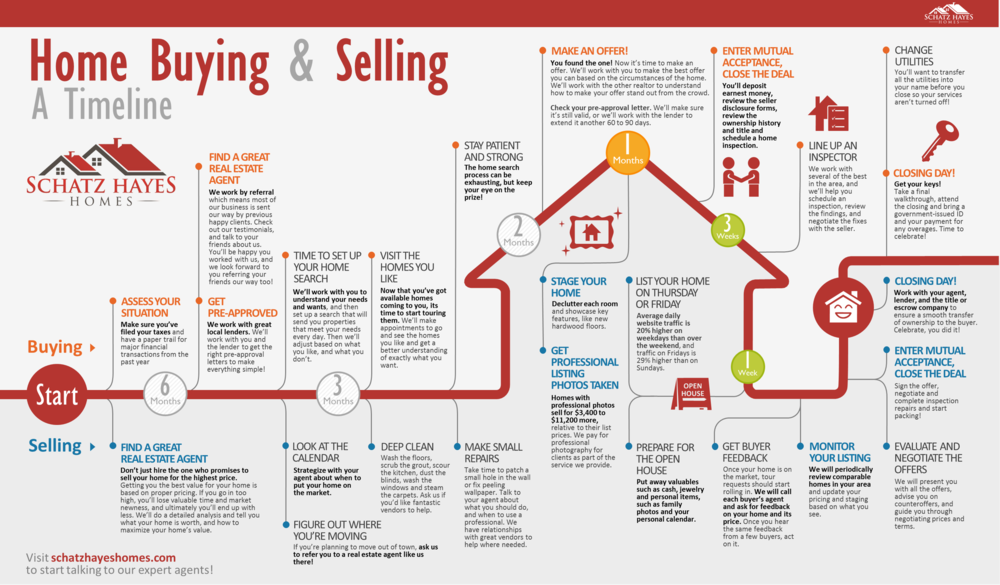
Frequently Asked Questions
What are the benefits of home staging?
A well-staged home will sell for more than one that's not been gussied up. Home shoppers, when they enter a nicely staged home, can imagine themselves living there. A home that's not staged will force a buyer to look past all of the seller's possessions to imagine the home as theirs. Photos of a properly staged home look better in online listings, which help sell the property.
How important is home staging?
Relative to the amount of time and money involved, staging may be one of the most lucrative projects you ever undertake. Potential buyers aren't just looking for a structure to inhabit—they're also looking for a way to fulfill their dreams and improve their lifestyle. Staging can create a more emotional purchase for the buyer, which ultimately can generate more money for the seller.
Is it better to sell a house empty or staged?
Some people argue that selling a house empty is better since potential buyers can better envision their own belongings and furnishings in the space and use the blank template to let their imaginations run. Plus, you would save on the costs to stage. Still, industry reports show that staged homes do often sell faster.
Plus, you would save on the costs to stage. Still, industry reports show that staged homes do often sell faster.
How expensive is home staging?
The median amount spent on home staging, when using a specialized staging service was $1,500, according to NAR's 2021 Profile of Home Staging Report. Still, a seller can spend more if needed, or if they feel the added expense will yield a better price. Expect to pay between 1% and 3% of the home's selling price on staging.
The Bottom Line
Even if you have plenty of cash, don't put too much money into the staging process. You want to emphasize the home's best features, but keep in mind that what sells the home and what makes the home usable for the buyer are not necessarily the same thing.
Overall, to get the most bang for your buck, your home staging efforts should be designed to appeal to the widest possible range of buyers. The more people willing to submit purchase offers for your home, the higher the selling price will be.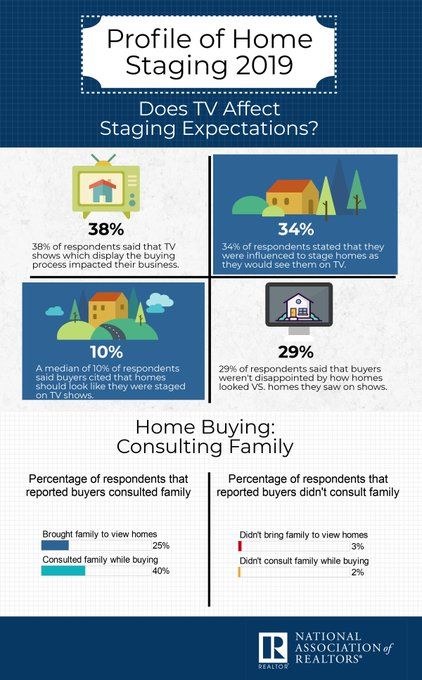
Home Staging Tips & Checklist
From Spotlight: Best Pro Secrets for Buying & Selling
Their agent won’t have to say, “Picture this.” Buyers will see your home at its best.
Image: CreativaStudio/GettyStaging your house can make you money. Twenty-three percent of sellers’ agents reported that a well-staged environment increases the dollar value buyers are willing to offer, according to the National Association of REALTORS® "2021 Profile of Home Staging."
Impact of House Staging on Price and Time on Market
Staging a house – where you decorate your house to entice buyers to bite – helps sell homes from three to 30 times faster than unstaged houses, according to a 2022 survey by the International Association of Home Staging Professionals. The same survey found staged homes sold for up to 20% more than the competition.
This article is packed with DIY tips for staging your home. But if you hire a professional home stager to help buyers fall in love with your house, the money is usually well spent.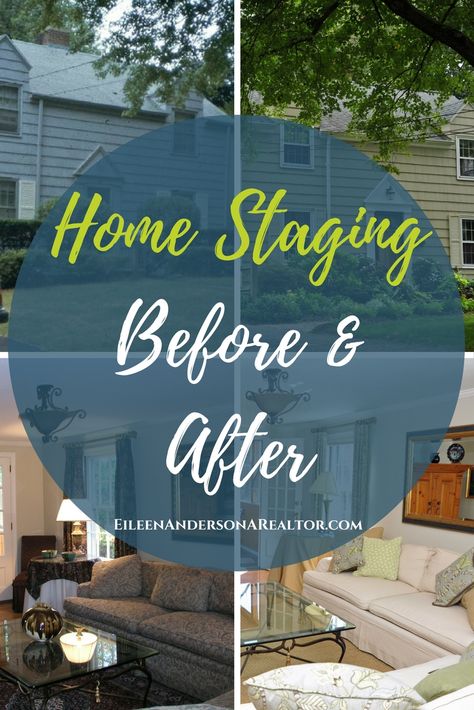 Spending around 1% of a home’s sale price to hire a pro to stage it resulted in a 7% return on investment, according to a 2021 survey by the Real Estate Staging Association. Professionally staged homes sold for an average of $40,000 over list price in 2021, RESA says.
Spending around 1% of a home’s sale price to hire a pro to stage it resulted in a 7% return on investment, according to a 2021 survey by the Real Estate Staging Association. Professionally staged homes sold for an average of $40,000 over list price in 2021, RESA says.
Professional staging costs vary depending on the region. Home sellers pay from $650 to $2,700 in home staging costs, according to HomeAdvisor. The size of your home and the scope of the project affect the cost, too. If your house is in good shape and your furniture fashionable, you may just need to pay a pro to rearrange the layout and declutter. If the house is empty or your furniture is stuck in 1982, a professional stager will recommend you rent furniture.
The cost of staging a home for two or three months usually costs about 0.75% of a home's list price, according to Bankrate. With the median U.S. home price around $375,000, expect to pay $2,800 for professional staging.
Even in a seller’s market staging can help your home sell faster and for top dollar.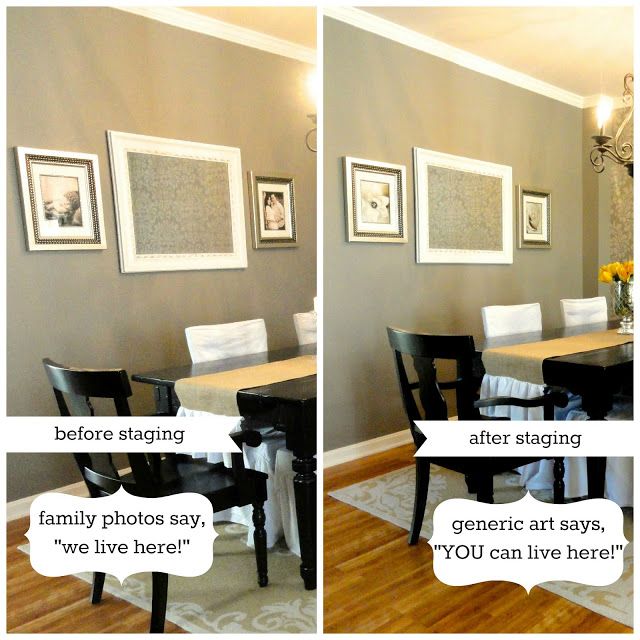
Just take this real world tale of two condo listings from Terrylynn Fisher, a REALTOR® with Dudum Real Estate Group in Walnut Creek, Calif., who also stages. Both units were in the same complex. One hadn't been staged or updated since it was built; the other was staged and had been slightly refreshed (a little paint here and there and one redone bath). Otherwise, both units were the same size and layout. The staged condo sold for about $30,000 more than the unstaged unit, she says. “People couldn't believe it was the same model."
Before your eyes turn into dollar signs, keep in mind staging isn't guaranteed to get you more money. But it's an important marketing tool to help you compete at the right price, which means you can sell faster.
Related: Why Spending Money on Fancy Bath Salts Can Help Sell Your House
Helping buyers fall in love with your property takes more than running the vacuum and fluffing the pillows: It's all about decluttering, repairing, updating, and depersonalizing, say real estate agents and stagers.
Home Staging Tips for Every Room
With help from Fisher and other sources, we've compiled the ultimate home staging checklist.
Jump to a specific room or area of the house:
Living Room | Kitchen | Bedrooms | Dining Room | Bathroom | Walls, Windows & More | Throughout the House | Exterior | For Pet Owners | Day of Showing
Living Room
Embrace symmetry when staging your living room. Coordinated sets, like these pillows, are pleasing to a buyer's eye. Image: Fluff Designs
- When placing anything from accent pillows and table lamps, go for symmetry, which is pleasing to the eye.
- Light it up with lamps. Chic lamps provide both added lighting and appealing decor.
- Make that fireplace glow. Scrub away soot stains and replace the old screen.
- If you're using staging furniture or buying slip covers, choose light colors for an airy, inviting feel.
- Whatever amount of furniture you have in your living room, remove a few pieces to make the room feel spacious.

- Use bright, coordinated accessories like accent pillows and throw blankets for a chic splash of color.
- Help buyers imagine their life in your home. Set the scene by displaying a board game or arranging furniture in conversational groups.
- Let a slideshow of beautiful images play on your television like a screensaver.
Back to Top
Kitchen
Image: Wendy F Johnson, Certified Master Kitchen and Bath Designer
- Clear everything from countertops except one or two decorative items, like a vase of flowers or bowl of fresh fruit.
- Pack up all the dishes except one attractive, matching set. Do the same with glassware, flatware, and cookware, and pare down all other cupboard and drawer items down to the minimum.
- Freshen up and modernize those cabinets with a fresh coat of paint or stain and new hardware.
- Seriously evaluate your appliances. Can they look new again with a good scrubbing? Give it the old college try or consider replacing with new models.
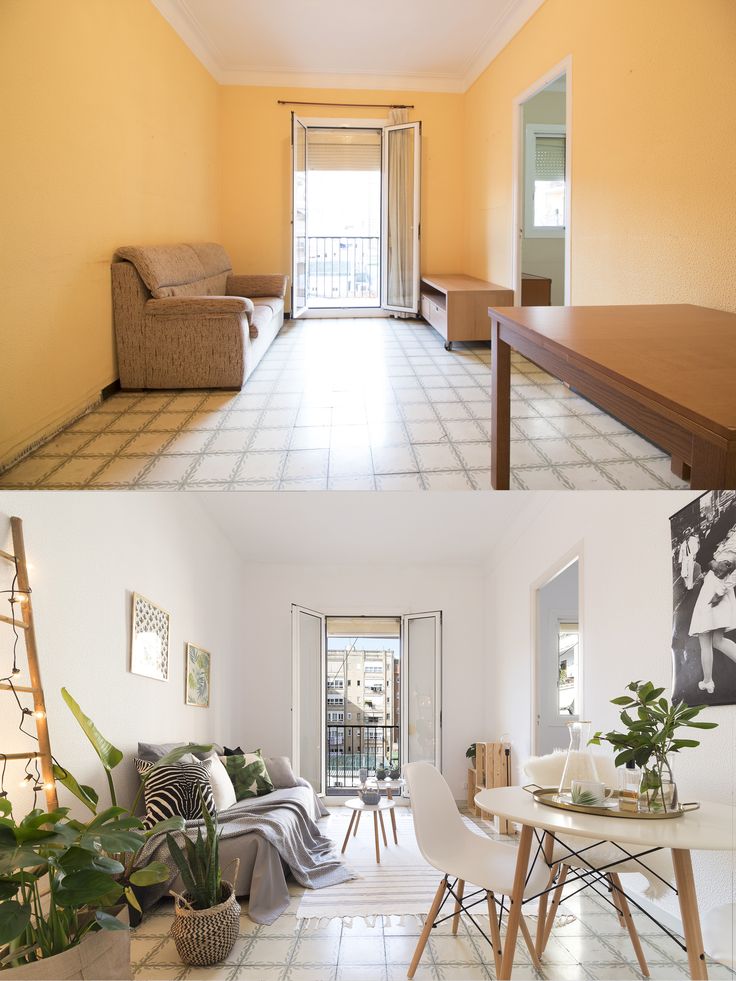 The Real Estate Staging Association strongly recommends stainless steel. Tip: You can get the look of stainless for the cost of a cheap dinner with stainless films.
The Real Estate Staging Association strongly recommends stainless steel. Tip: You can get the look of stainless for the cost of a cheap dinner with stainless films. - Remove those fridge magnets and give the door and handles a good cleaning.
- Scrub dirt, grime, and stains from walls, cabinets, and backsplashes.
- Clean cabinet interiors, especially under the sink.
- Clean and organize the pantry, leaving some empty space to make it look bigger. Store items in decorative baskets and display a few jars of fancy jam and other upscale condiments.
- Empty all trash cans and move them out of sight.
Back to Top
Bedrooms
Image: Fluff Designs
- Go gender neutral in the master bedroom. Ditch those dainty, floral pillow shams or NASCAR posters.
- Pack up all but the clothes you're wearing this season to make your closets look larger.
- Swap out the motley crew of mismatched hangers in your closet for a set of wooden ones to create a classy, boutique look.
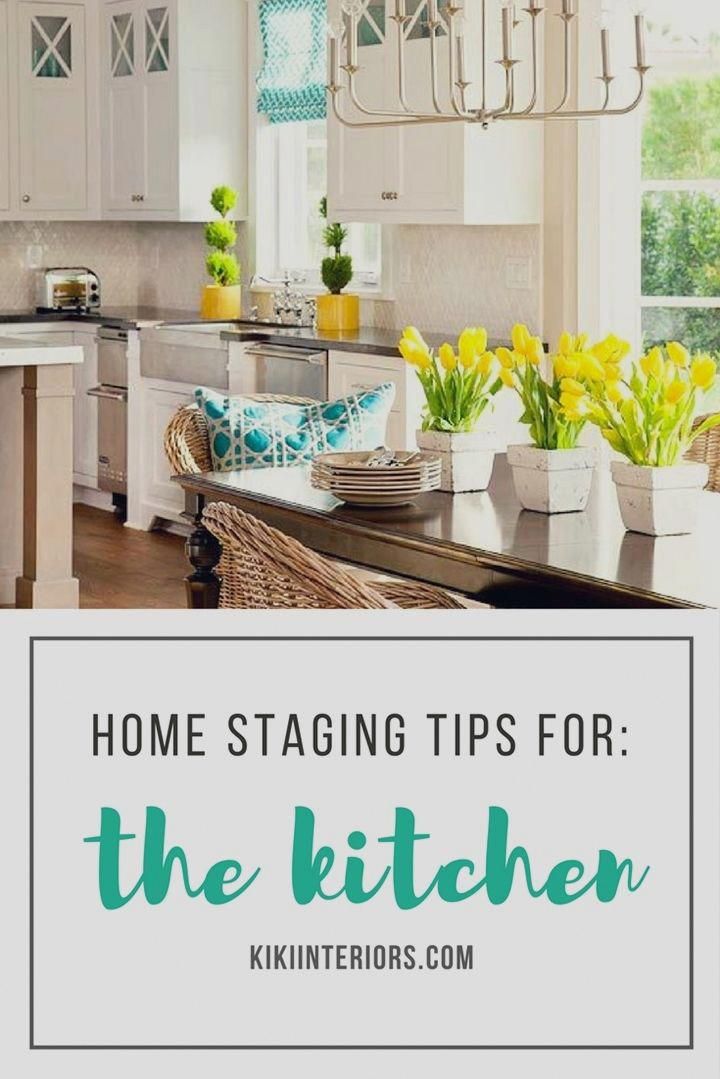
- Put jewelry and other valuables in a safe spot.
- Consider giving extra bedrooms a new identity as a home office, sewing room, or other interesting function.
- Remove televisions or video game consoles from bedrooms to depersonalize and create a serene setting.
Back to Top
Dining Room
Help buyers imagine hosting a dinner party in their new dining room by setting out attractive place settings. Image: East Coast Creative
- Let buyers entertain the idea of entertaining. Set out some chic place settings around the table, or a few wine glasses and a decanter on the buffet.
- Strike a balance between overly formal and too casual with an attractive runner and a few fun, decorative elements — think small floral vases or short candle holders.
Back to Top
Bathroom
Image: Stirling Home Studio
- It's time to degrime: Scrub and sanitize the walls, floor, shower door — virtually every surface that comes in contact with steam.
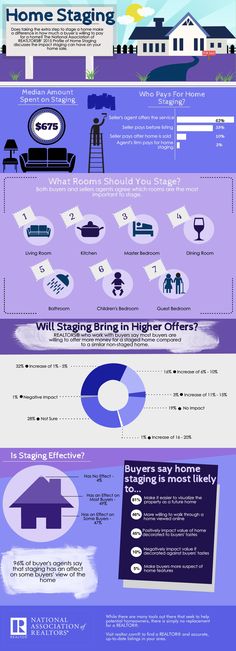
- Spend extra time scrubbing that tile grout and recaulk around the tub if necessary.
- If your bathroom tile is dated, try paint instead of replacing it. Start with a high-adhesion primer and either epoxy or latex paint.
- Remove clutter from the countertop, tub, and top of toilet. Clean surfaces until they gleam.
- Pack up and hide all your personal products — from medicine to razors.
- Create a luxury spa look with a fancy soap dispenser, fluffy white towels, decorative baskets, candles, plants, a white shower curtain, and a new bath mat.
- Fix leaky or running toilets and replace toilet seats.
- Remove hard water stains on faucets and shower heads. (Try vinegar!)
- Take a daring sniff of the drains. Odorous? Clean them out and deodorize with baking soda, boiling water, or vinegar.
- Time for a new sink anyway? Try a pedestal sink to optimize precious bathroom space.
Back to Top
Walls, Windows, and More
Image: Laura Schuchart of The Soulful House
- Have a dark corner or hallway? Brighten it up with a decorative mirror.
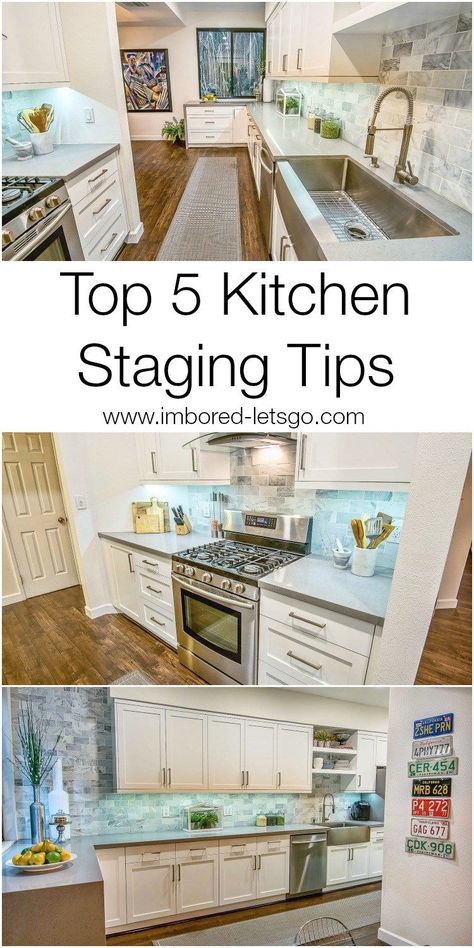
- Neutralize the walls. If any rooms are painted in dark colors, repaint white or beige.
- Paint adjacent rooms the same color to make the whole space feel larger.
- Fill nicks and holes in walls, and touch up with paint.
- Sorry, wood paneling. It's time. Paint over paneling with a neutral color. To really cover your tracks, use wood filler between panels and paint over the entire thing.
- Make sure every switch plate and outlet cover matches and looks brand new.
- Wash the windows, inside and out. Repair any holes or tears in screens.
- Replace those family portraits with interesting art placed strategically throughout the house. Avoid leaving dead space on walls.
Back to Top
Throughout the House
Image: Liz Foreman for HouseLogic
- Declutter! Consider it prepacking for your move. Box up books, clothes, and personal items and place them (neatly!) in the garage or — better yet — a rented storage unit.
- Don't forget to include memorabilia in those decluttering bins.
 Family photos, diplomas, and the kids' artwork should all go.
Family photos, diplomas, and the kids' artwork should all go. - Keep closets, basements, and attics as empty as possible to maximize the appearance of storage space.
- Transform underused areas of the house — the alcove under the stairs or the end of a hallway — into functional spots. Add a desk to create a mini office, or a chair and small bookshelf for a reading nook.
- Swap dim lights for high-wattage bulbs.
- Check every door, drawer, and cabinet to ensure they open and close easily. Swap out any faulty — or dingy — hardware.
- Damaged or aging hardwood floors? Replace damaged boards with new wood, sand down the entire floor, and re-stain.
- Do a deep (deep, deep) clean. Hire a professional cleaning service to clean your home from top to bottom — including carpets — before viewings.
Back to Top
Exterior
Image: Liz Foreman for HouseLogic
- Hang attractive house numbers that are legible from the road.
- Brighten up your porch with fresh paint or stain.
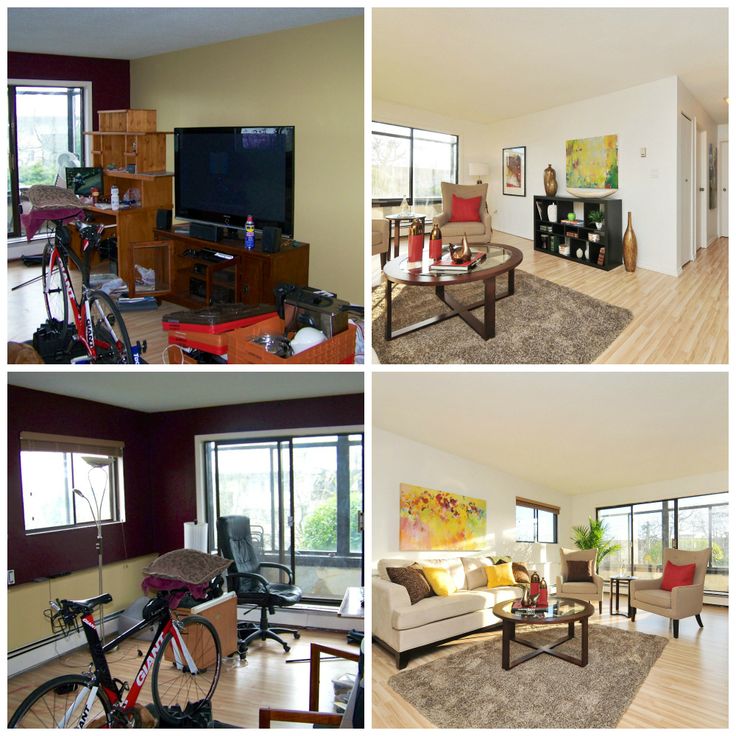
- Add a fresh coat of paint to the front door, preferably red, black, blue, or wood stain, so long as it complements the trim and doesn't blend, says the Real Estate Staging Association. Steer clear of unconventional colors like purple.
- Buy a new doormat to welcome home buyers.
- Power wash the house exterior, walkway, steps, driveway, and porch until everything sparkles.
- Make sure the locks and doorbell function.
- Make that mailbox look clean and welcoming, or get a new one.
- Plant lots of colorful blooms in attractive pots and planter beds.
- Trim back trees and shrubs from the approach to the front door.
- Whip that yard into shape with fresh sod or new seed
- Store yard equipment and children's toys out of sight.
- Repair shaky banisters.
- Get a hammock (or bocce ball game or raised fire pit) to show off how fun your yard can be.
- Dress up any imperfect planting area with mulch.
- Make sure entryway lights function and are free of cobwebs and insects.

- Hide trash cans, recycle bins, and garden hoses.
- Don't forget your outdoor living space. Stage your patio like a second living room, with fashionable furniture, accent pillows, an outdoor rug, and other patio-friendly decor.
Back to Top
For Pet Owners
Image: Ellen Mertens
- Scrub those pet stains on the carpets and rugs until totally gone or replace them if necessary. Try cleaning formulas made especially for pet odors.
- Pet odors soak into your best friend's favorite things. Completely remove pet beds (or Fido's most-loved couch), blankets, toys, play structures, food bowls, and the like.
- Use air fresheners that eliminate rather than mask odors. There's nothing worse than the smell of artificial pine with kitty litter undertones.
- Repair or remove any furniture that's been scratched or gnawed on.
- Clean all pet "presents" from the yard.
- Keep cat boxes immaculate and hidden or — better yet — see how your feline-loving friends feel about a temporary houseguest and remove litter boxes altogether.

- Remove any dog or cat doors. Pets? What pets?
- When you leave the house for a viewing, take all the furry (or feathery or scaly) residents along with you.
- Make a pet hair sweep the last thing you do before you leave the house.
Back to Top
Day of Showing
Image: Oliveshadow/Shutterstock
- Add a seasonal touch. Simmer cinnamon sticks in the fall and set out fresh cut lilacs in the spring.
- Tidy up like you've never done before.
- Avoid cooking any food for your own meals, but do bake some cookies or other baked goods to leave a welcoming aroma behind.
- Take off. After all that staging work, you deserve a trip to the spa while potential home buyers are busy falling in love with your house.
Back to Top
More in Buy & Sell
documents, repairs, photos, announcement, expert advice
Preparing an apartment for sale
Together with experts, we prepared a memo on how to prepare an apartment for sale and what needs to be done to save time and effort
| Read / 10 minutes |
Elena ODINTSOVA
KP journalist
Alexander Tsyganov 9004 0002 Head of the Department of Mortgage Housing and Financial Institutions of Real Estate Market Financial University
Alexander Kozlov
Commercial Director
Rusich

The last six months have been a very good time for sellers of apartments: prices have been rising, buyers have taken apart almost everything. But this does not mean that even in such times you are guaranteed to sell your home at the best price. And most importantly, such a situation on the market will definitely not last forever. How to increase your chances of finding buyers faster and at the same time not to sell too cheap? Here, according to experts, is the minimum of actions that need to be taken when preparing an apartment for sale, if, moreover, you are not ready for extra costs. nine0005
Step 1. Putting things in order
A good repair, of course, increases the price of the apartment. But experts do not recommend doing it immediately before the sale in housing, which clearly does not belong to the elite or business class. Serious investments, most likely, will not pay off.
— The apartment should look decent, and the new owner will make repairs to your liking. But it’s worth doing a little cosmetics - eliminating obvious jambs, advises Head of the Department of Housing Mortgage Lending and Financial Instruments of the Real Estate Market of the Financial University Alexander Tsyganov .
Weeds are cracks and stains on the walls and ceiling, smudges after leaks, etc. You also need to put the plumbing and electrics in order. There should be no leaking faucets, rusty stains in the sink and wires hanging from somewhere. Everything that cannot be replaced, you just need to clean it off - this is the cheapest way to add attractiveness to an apartment. nine0005
And most importantly, throw out all the rubbish that has accumulated on the balcony and in the corners and take the old furniture somewhere. You can leave only what looks aesthetically pleasing and does not visually clutter up the apartment. This is especially true for singles.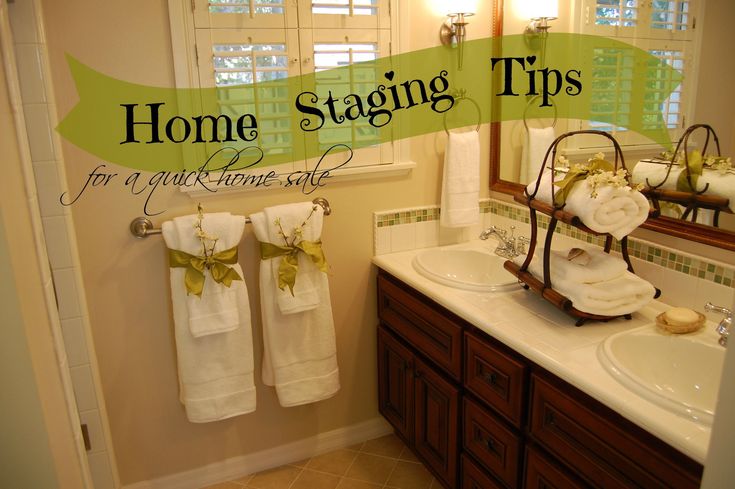
To make the apartment look completely empty and uninhabited, you can go for a little trick. Buy a couple of new chairs and some beautiful and cozy accessories like throws (cover the old sofa with them). Then you take everything to the dacha.
Step 2. Looking for documents
“Looking for” is no joke. According to realtors, half of the owners do not remember where they have the documents related to the apartment. Excavations in papers should be taken care of in advance. You should have on hand:
- if you became the owner of the apartment before 2016 - a paper certificate of registration of ownership (after 2016 it is not issued, ownership is confirmed by an extract from the unified state register of real estate (EGRN), which can be ordered at any convenient moment),
- title document - a document explaining exactly how you became the owner of this apartment: a contract of sale, a certificate of inheritance, a certificate of privatization, etc.
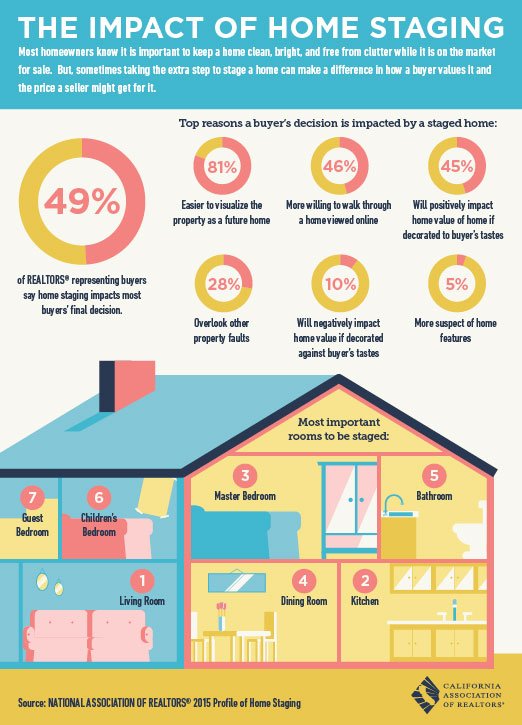
- It is also worth preparing a technical passport in advance. This document allows you to understand whether the apartment was redevelopment, legalized or not, - says lawyer Svetlana Petropolskaya . - Buyers are also usually very important information about the persons registered in the premises (an extract from the house book shows whether there are citizens who can retain the right to reside even when changing the owner of the home) and a certificate of the absence of debts for utility bills. nine0005
Depending on the situation, you may also need:
- notarized consent of the spouse to sell the apartment (required if the property was purchased in marriage), it is better to take when the deal is already on the ointment.
Step 3. Compiling a "selling" ad
- It's better to start with the main location: the nearest metro station, street, house address, - Alexander Kozlov instructs.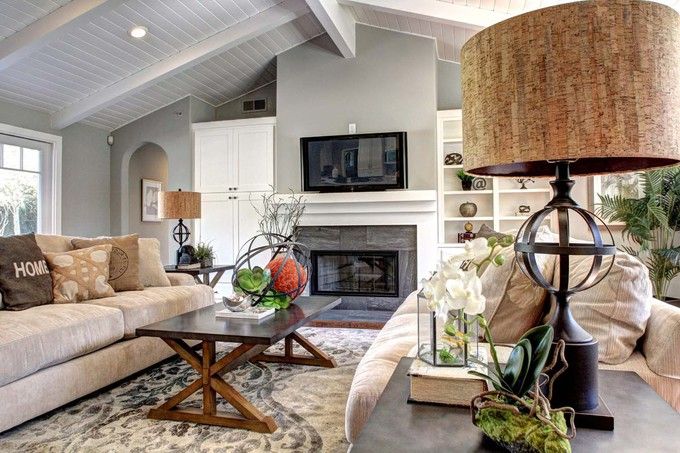 nine0005
nine0005
It is highly desirable to indicate:
- material of the house, its number of storeys, on which floor the apartment is located (for many this is an important point),
- number of rooms, their area, separate or adjacent, kitchen area,
- if the windows of some of the rooms or the kitchen overlook the sunny side or a quiet, green courtyard, we also indicate this,
- bathroom - separate or combined, bath or shower,
- if some non-standard design solutions are used,
- is there a dedicated internet line, telephone,
- in conclusion, we indicate the terms of sale - a direct deal or an alternative one, whether we are ready to sell to mortgage lenders, whether bargaining is possible.
In addition to the location of the apartment, the area and the number of rooms, it is worth indicating in the advertisement where your windows face: on the sunny side or on a quiet, green courtyard.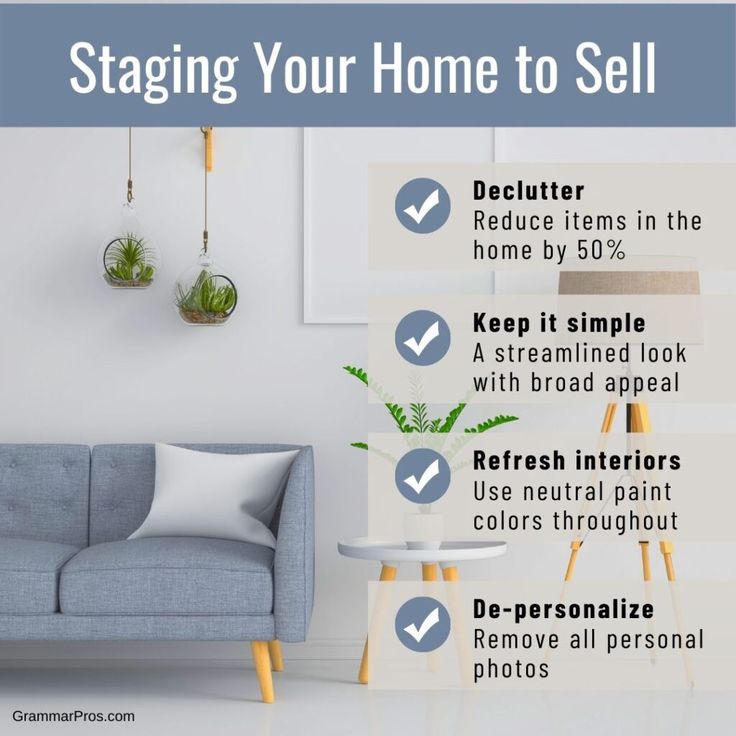 Photo: Evgenia Guseva
Photo: Evgenia Guseva
Experts advise avoiding clericalism, but also not overdoing it with epithets like “beautiful”, “magnificent”, “you have been dreaming about such an apartment all your life” - this is unlikely to really attract anyone.
— Do not write “apartment in good condition”, because the concept of “good” is different for everyone. Write as specifically as possible: plastic windows, parquet on the floor, suspended ceiling, updated wiring, repairs were done in such and such a year, - recommends independent financial consultant Alexander Pateshman . - In addition to the standard information, be sure to indicate the advantages of the apartment. For example, there are two schools within walking distance. The windows face the sunny side, so the flowers feel good in the room. Free parking, clean entrance. The documents are ready, no one is registered in the apartment.
The announcement must not be too verbose.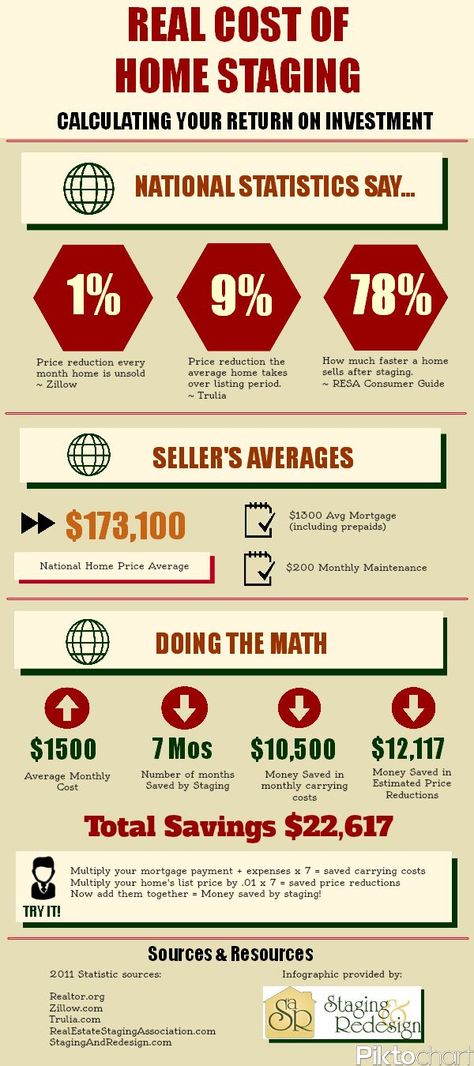
- Some sellers try to list all the brands used in the renovation and decoration of the apartment. Such opuses take up a lot of space, but nothing but a smile causes buyers, says President of the St. Petersburg Chamber of Real Estate Dmitry Shchegelsky.
Read also
Housing programs in Russia
There are many housing programs in Russia that help to solve the housing problem for different categories of citizens. We figure out which one is right for you
| More details |
Step 4. Getting ready for views
The most important step in this preparation is a good cleaning. Cleanliness and tidiness is almost always an emotional 2:0 in your favor. If there is no time for cleaning at all or the apartment is large and neglected, it is better to call a cleaning company - the costs will pay off.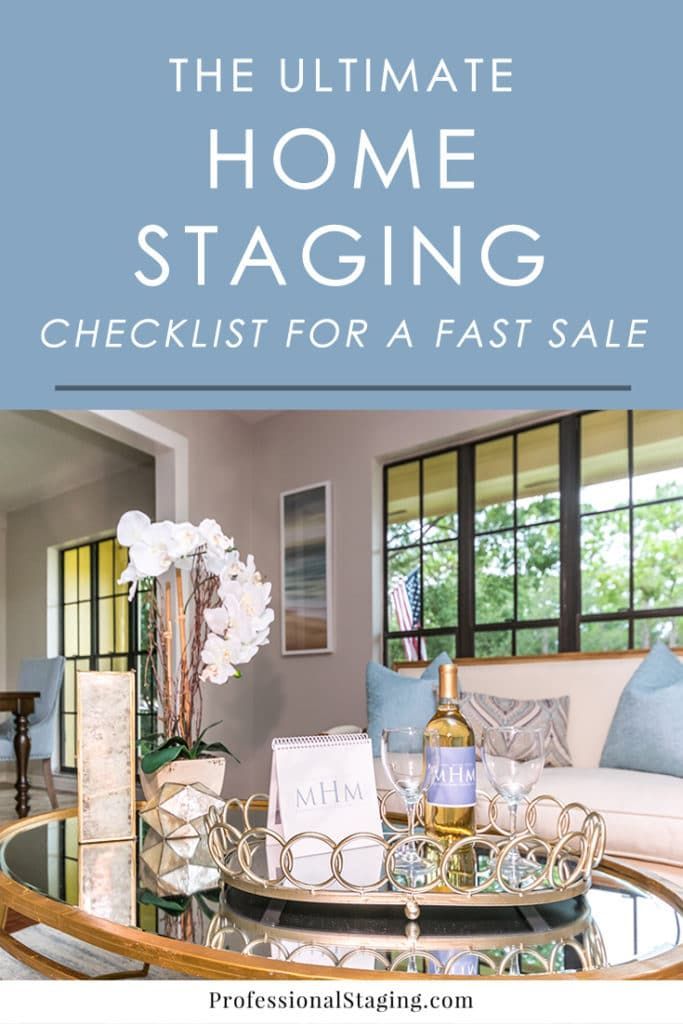
Windows also need to be washed. And before accepting potential buyers, the dwelling should be well ventilated. It should not contain unpleasant odors such as the smell of drugs. But the smells of freshly brewed coffee, pastries, jam, according to realtors, really often help to sell an apartment faster and more profitably. And there is nothing mystical in this - many decisions about buying a home are made purely emotionally (I felt good here - I want to live here). nine0041
Get ready to view the apartment in advance: wash the windows, put things in order. Photo: globallookpress.com
Do not forget to put things in order in the stairwell. Check if the light bulbs work, if the floor is washed. It is worth going at least temporarily to eliminate these shortcomings on your own: screw in a light bulb, sweep the platform in front of the door. Yes, this is not your territory, but it is it that can emotionally work against you - a dark and dirty entrance is unlikely to seem attractive to anyone. nine0041
nine0041
Step 5. Taking the right photos
This is one of the most important steps, it largely depends on how many people will come to see your apartment. You understand, most people trust the picture more than the description. And emotionally, it affects them more strongly.
- The very first rule is that photographs should not contain people, animals or personal items. These photos are not for your personal album, which means they should be as informative as possible for the buyer. And besides, they were made in good lighting and on equipment with good resolution, - suggests commercial director of the concern "RUSICH" Alexander Kozlov .
Every room should be photographed, not forgetting the kitchen, bathroom, balcony or loggia. The general plan of the house will not be superfluous.
It's not by chance that the experts talk very insistently about good lighting - it is desirable to shoot in the daytime.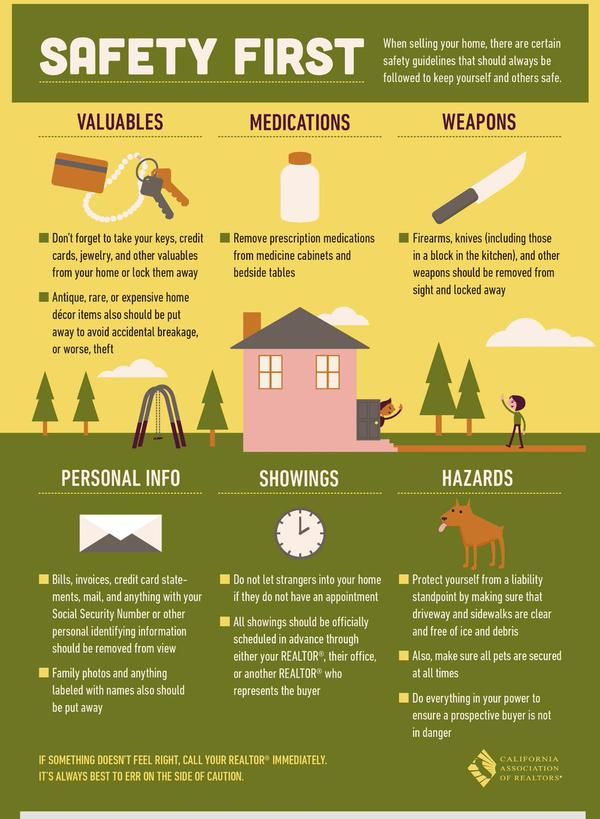 This is not only for the convenience of potential buyers. Light rooms look more spacious. On modern smartphones, you can control the light sensitivity, which will help make photos more attractive. nine0041
This is not only for the convenience of potential buyers. Light rooms look more spacious. On modern smartphones, you can control the light sensitivity, which will help make photos more attractive. nine0041
But experts categorically do not recommend using Photoshop and retouching pictures - a discrepancy will pop up during viewing and can cause irritation.
These factors reduce the cost of housing and will be a reason for bargaining
- Old repairs, rusty plumbing, pipes in poor condition.
- Bath and toilet facilities are in poor condition and need to be updated.
- Poor pressure in the pipes and, accordingly, the water runs in a small stream. nine0092
- Old wiring, mixture of copper and aluminum, this may cause a fire.
- There are traces of smudges on the ceiling.
- Batteries do not heat well (during the heating season).
- Wind from windows.
- The balcony is not glazed.
- Poor transport accessibility.
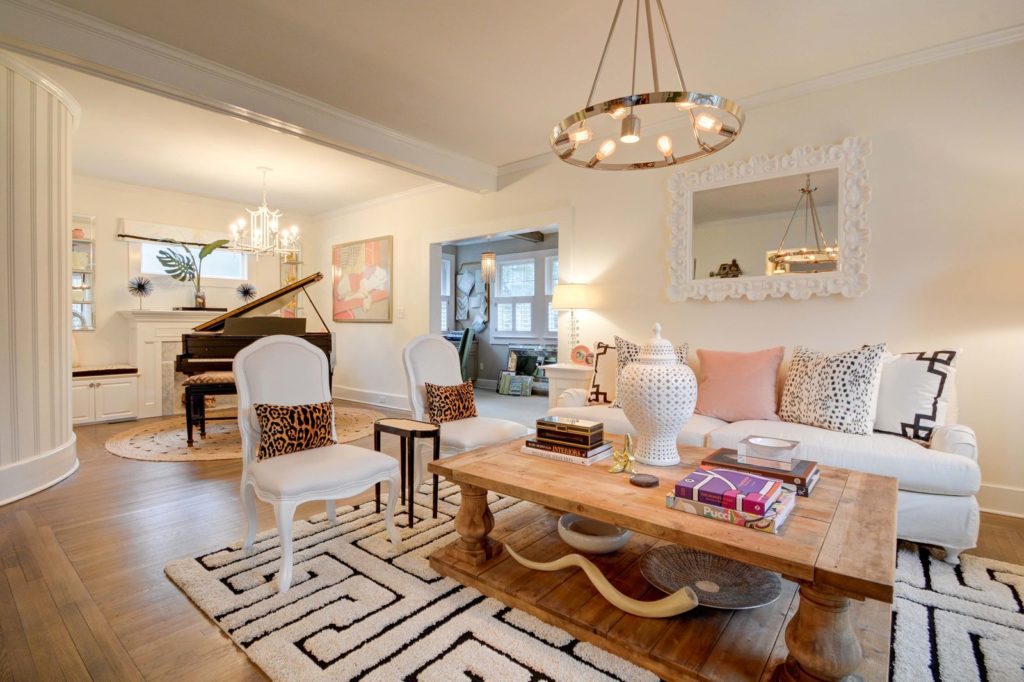
- Most likely, in these cases, the buyer will ask for a discount, - Alexander Pateshman warns. - Therefore, prepare in advance the arguments why you do not want to do this. For example, in this area, your price is the lowest (but it must be true) or there are several excellent schools nearby (if buyers are with children) and an excellent clinic with wonderful specialists. If you were persuaded to a discount, ask for some kind of bonus: for example, that you will vacate the apartment no earlier than in a couple of months. nine0041
Read also
Legal advice
Buying a home, moving into a new home, or any other action with real estate is an important and responsible task. Komsomolskaya Pravda asked lawyers to tell you about all the details of this process
| More details |
Cover photo: shutterstock.com
What do you pay attention to when choosing an apartment? What advice can you give real estate sellers? Share in comments:
Comments for the site Cackl e
how to write and where to place, tips .
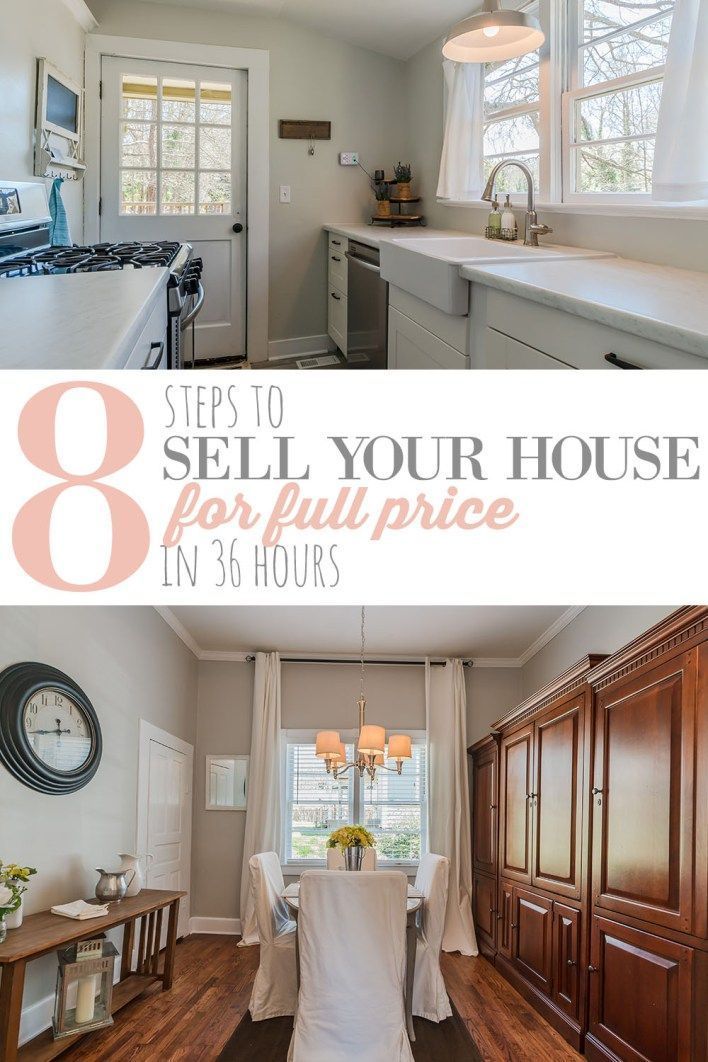 When looking for a buyer on your own, this moment becomes one of the key ones. Consider how to do this in order to get the desired result in a short time. nine0005
When looking for a buyer on your own, this moment becomes one of the key ones. Consider how to do this in order to get the desired result in a short time. nine0005 Experts in the article:
- Elena Mishchenko and Denis Gadzhiev, top managers of NDV Real Estate Supermarket
- Irina Komina, head of the Smolenskaya branch of the real estate agency Azbuka Zhilya
Preparation for writing an advertisement for the sale of an apartment
- Study the market, put yourself both in the place of the seller and the place of the buyer.
- Get acquainted on various sites with advertisements for the sale of apartments similar to yours in terms of parameters: number of rooms, location, infrastructure of the area. This will help in determining the optimal cost of the apartment. nine0092
- Examine ads given by buyers. This will help you better understand what apartments buyers are looking for right now.
How to write an advertisement for the sale of an apartment
It should be detailed so that the potential buyer does not have the simplest questions - all the answers to them are already initially assumed in the advertisement.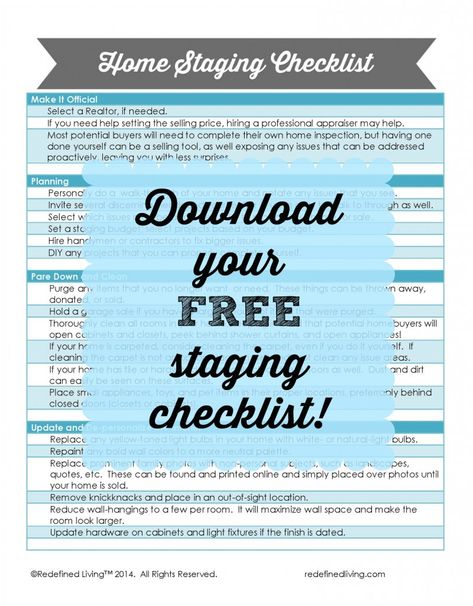 There are several main points of such an announcement. If you miss even one of them, there is a risk of selling the apartment for a very long time. nine0005
There are several main points of such an announcement. If you miss even one of them, there is a risk of selling the apartment for a very long time. nine0005
1. More information about the house and apartment
- The city and street name are written - potential buyers start their search by choosing a district.
- Indicates how many floors the house has and what materials (brick, block, monolith or panel) it is built from.
- The number of rooms in the apartment is indicated, whether they are adjacent or separate.
- The footage is written not only of rooms, but also of the kitchen - after all, some family members spend a lot of time on it. nine0092
- It is indicated whether the bathroom is combined or separate, whether there is a full bath or a shower cabin is installed.
- Explains whether the apartment has Internet, cable TV and telephone.
- It is specified what kind of flooring is in the apartment, whether plastic windows are installed.
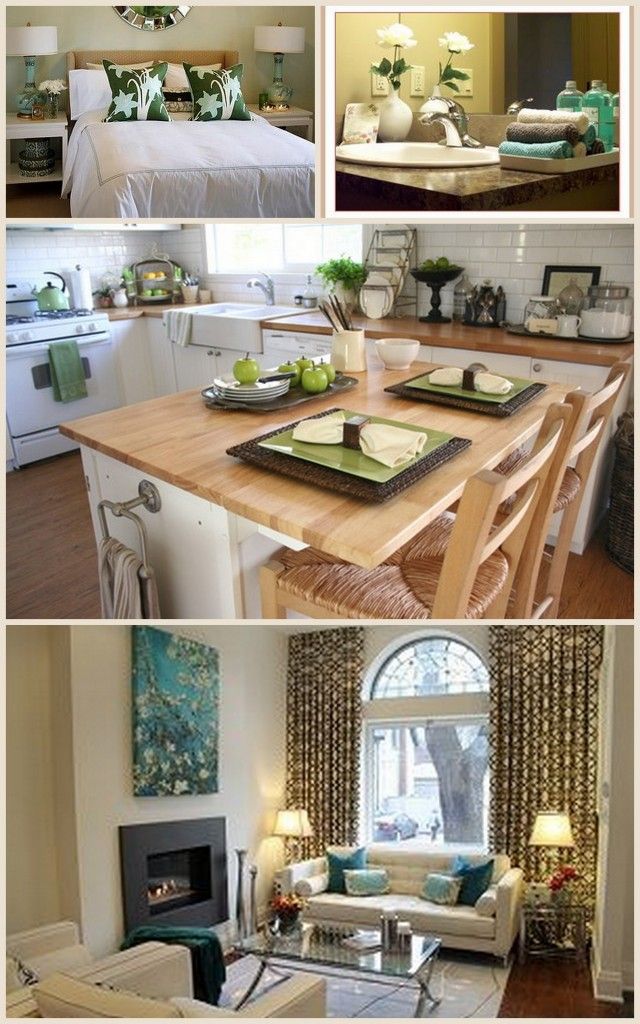
2. Description of the sale procedure
- Indicate whether this sale is direct or alternative, whether someone is registered in this living space or it is free. nine0092
- Explain how many owners the apartment has. The buyers are positively affected by the words “from the owner” - this means that you can move into the apartment immediately after the transaction is completed.
An example of a form for filling out an ad on one of the sites. Many options have already been recommended for filling in so that the information about the apartment is complete
Elena Mishchenko, head of the urban real estate department at NDV Supermarket Real Estate:
- An incorrectly composed ad using inappropriate text, unsuccessful photographs, where the seller does not think about the portrait of the buyer, and even overcharges, can delay the sale of an apartment for years. My advice is this. If an apartment is not sold within a week, the ad is “blurred”, and even if the owner lowers the price, potential buyers will scroll through it. Therefore, I advise you to initially put in advertising a price corresponding to the market. But if, despite all efforts, the ad hangs in the advertisement for a long time, the only way out is to remove it from all sites, take photos of the apartment again and post a new one. nine0005
Therefore, I advise you to initially put in advertising a price corresponding to the market. But if, despite all efforts, the ad hangs in the advertisement for a long time, the only way out is to remove it from all sites, take photos of the apartment again and post a new one. nine0005
Irina Komina, head of the Smolenskaya branch of the real estate agency Azbuka Zhilya:
— A well-written ad attracts a large audience of buyers and thereby speeds up the implementation of the object. When we buy something, we want to know more about the item we are buying, so a more informative ad than a one-sentence ad will definitely grab our attention.
3. A little about the area and neighbors
- An advertisement for the sale will not be complete without a detailed description of the area where the apartment is located.
- The situation must be described concisely and honestly. If you note that the area is green, but in fact there are few trees, then the potential buyer will see the discrepancy even before meeting the seller.
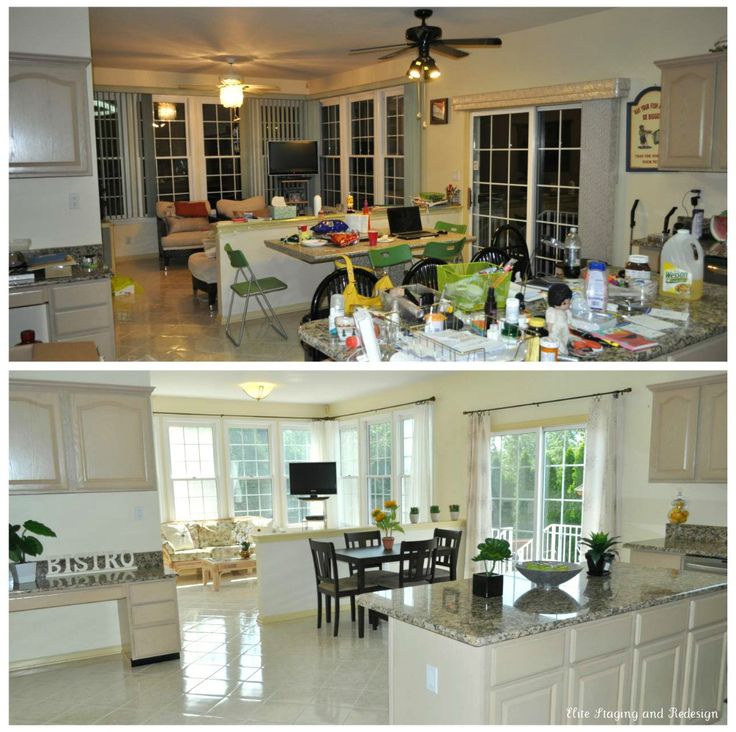
- Mention the proximity of such infrastructure as shops, schools, clinics, kindergartens.
- Indicate how things are with car parking in the area in general and in the courtyard of the house in particular. If there is a park near the house, then this should also be noted in the ad. nine0092
- It is not worth concentrating the attention of potential buyers on the absence of greenery.
- Neighbors can be mentioned if they are good people. The phrase in the ad "it is easy to maintain normal relations with neighbors" usually has a positive effect on the buyer.
4. Do not use unnecessary and enthusiastic words
The advertisement must not contain excessively enthusiastic words in the description of the apartment. You should not write about “exclusive tile in the bathroom” or “super views from every window” - buyers usually do not read this, they are interested in specifics. The ad must contain full information about the apartment without flashy epithets and the like.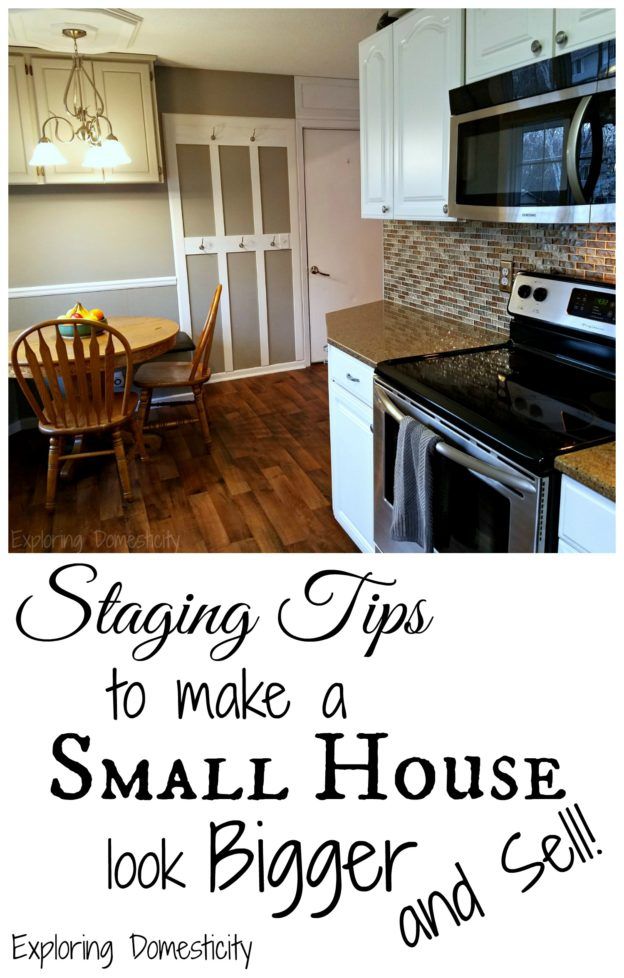 The buyer is not interested in the beauty of the seller's style, but in the housing that he wants to buy. nine0005
The buyer is not interested in the beauty of the seller's style, but in the housing that he wants to buy. nine0005
The advertisement must not contain excessively enthusiastic words in the description of the apartment (Photo: TASS/ Grigory Sysoev)
“When meeting with a buyer, you need to be prepared for unexpected questions”
Denis Gadzhiev, Deputy Head of the City Real Estate Department, NDV Real Estate Supermarket:
— Buyers often ask unusual questions. For example, sometimes they ask if there are many dog owners in the entrance when hot water is turned off in the house. There are people who come with a frame to measure the radiation in the apartment. There was even a case when the buyer knocked off the varnish from the parquet to analyze the material for toxicity. nine0005
Snezhana Kondratenko, head of the Kakhovskaya branch of the real estate agency Azbuka Zhilya:
— Even with a well-written ad, a potential buyer can ask original questions at a meeting.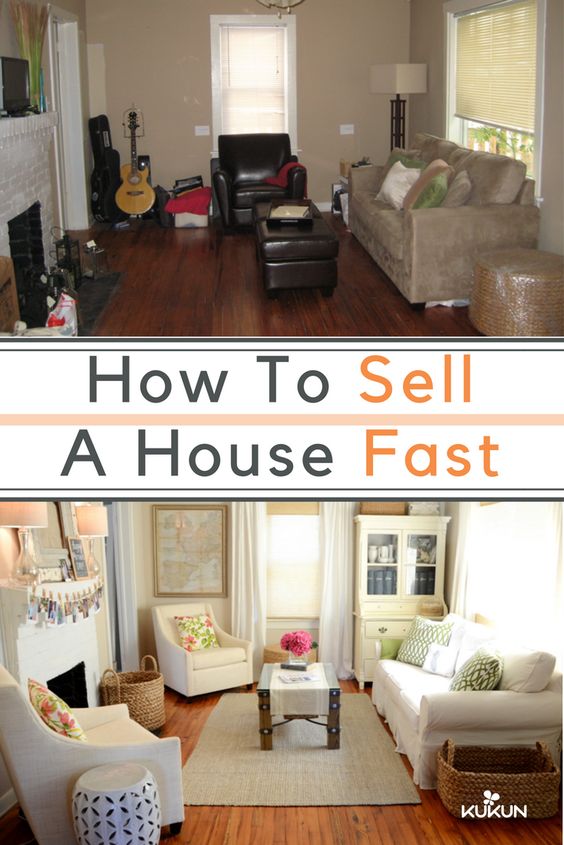 Here are some real questions from my practice:
Here are some real questions from my practice:
- What is the magnetic radiation in your apartment? Can it be measured?
- Is it possible to measure the corner of the front door?
- Which side of the world is the toilet facing? nine0092
5. No photos anywhere
After the ad is written, you should take good and high-quality photos of the apartment. To do this, you need to:
- remove everything superfluous so that the personal belongings of the owner do not get into the frame;
- pay attention to good lighting. If the day is overcast and the apartment is not very bright, it makes sense to reschedule the shooting for another day;
- take pictures not only of the rooms, corridor, kitchen and bathroom, but also the views from the window; nine0092
- take good photos of the facade of the house and the yard;
- photographs must be horizontal, vertical ones will not be able to emphasize the dignity of the apartment and will give a false impression of it.
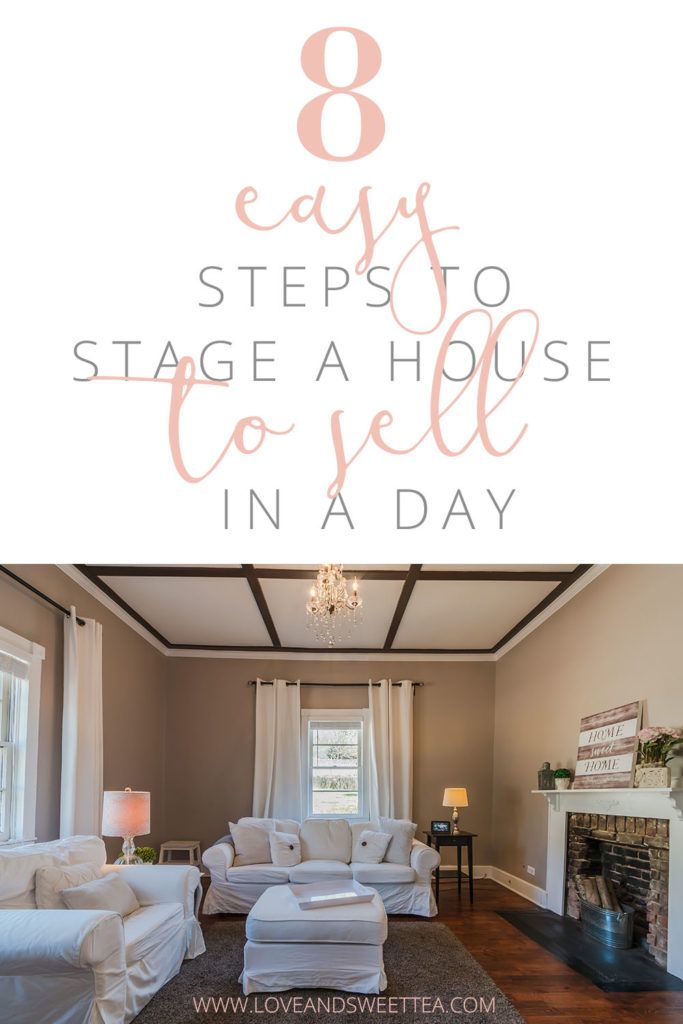
A good advertisement for the sale of an apartment is the key to success. Carefully chosen and precise words will attract potential buyers, while an unsuccessful ad can scare even those who suit your apartment in all respects - they simply will not respond after reading. nine0005
How not to write an advertisement for the sale of an apartment. List of errors
- The words "urgent sale" or "bargaining". Buyers will perceive this as a readiness for a significant reduction in the cost of the apartment. №
- Embellishment of reality. Such an announcement of the buyer, perhaps, will be of interest, but upon viewing it will become clear that the seller was cunning.
- Use of a large number of abbreviations in the announcement. This can be annoying, and the potential buyer will not read it to the end, but will move on to more intelligible ads. nine0092
- Mention that a relative died in the apartment. This can scare off an impressionable buyer who, in a different scenario, would have purchased this particular property.

Learn more



